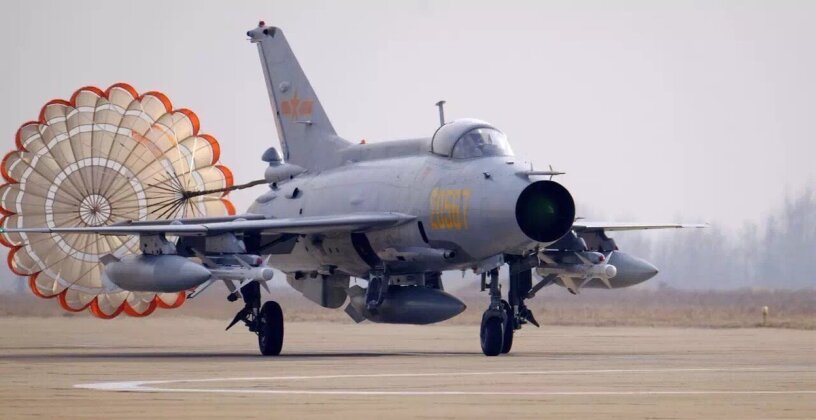News
China to Retire Last J-7 Fighter Units By Year’s End: What Does it Mean For the Fleet’s Future?
The Chinese People’s Liberation Army (PLA) is set to retire the last J-7 fighters from service by the end of 2023, according to reports from the Global Times state media outlet. The fighter class is the lightest in service in the country and one of the very smallest in the world, and remained in production until ten years ago in 2013 – albeit exclusively for export in its final years. While the PLA had approximately 400 J-7s in frontline service in the late 2010s, numbers have been contracting rapidly as the fleet receives fighter jets from newer classes at an unprecedented rate. China’s air force today recieves more new fighters per year than that of any other country by a significant margin, with four of the five fighters produced on the largest scales worldwide today being Chinese. The J-7 was developed during the 1960s as a derivative of the Soviet MiG-21 Fishbed second generation fighter, which was considered the most capable in the world when it joined the Soviet fleet in 1959. Although MiG-21s remain widely operated across the world today, from Cuba and Romania to Egypt and Syria, production lines for the class were closed in 1985 meaning J-7 airframes operating in China and its overseas clients are on average much newer and benefit from far more advanced production technologies.

Relatively few J-7 fighters joined the PLA during the Cold War, although the class did see multiple export sales including to Iran, Albania, Egypt, Pakistan and Iraq. Cold War era models were quickly phased out of service in the 1990s, as production of the class was expanded, placing it at the centre of modernisation efforts since China was unable to produce up to date fourth generation fighters domestically. Efforts were made at the time to integrate many of the fourth generation technologies then under development onto the aircraft, with the new J-7E and J-7G variants with enhanced avionics and third generation combat capabilities entering service with very significant performance advantages over prior models. The most advanced variant the J-7G boasted much higher use of composite materials, a full glass cockpit, a new double delta wing, three multi functional HUD displays and HOTAS, helmet mounted sights, a radar cross section reducing fuselage and conformal fuel tanks among other features that were characteristic of fourth generation fighters.
By the time the J-7 had neared the end of its production run, China had already begun flying its first fifth generation fighter prototypes developed under the J-20 program, indicating just how long a time period the J-7 program spanned over. J-7s with modern avionics are prized for their very low operational costs, allowing pilots to spend very long periods in the air every year at a negligible cost compared to newer fighters like the J-16 or J-20. They are nevertheless hindered by their limited access to modern missile classes, the small sizes of their radars, their lack of electronically scanned array radars, and their limited endurances and weapons payloads.

J-7s are being replaced by newly built J-10C and J-16 fighters, the latter which is over three times its size, with the discrepancy in capabilities between even the J-7G and new Chinese fighter classes being tremendous. Retiring the J-7 from frontline roles will standardise frontline units on a smaller number of fighter classes, while making more airframes available in training units, which has been the destination of many of the aircraft. Replacing the J-7 with fighters from modern classes provides a tremendous boost to the overall fighting capabilities of the PLA, albeit at the price of a significant rise in operational costs particularly when heavyweight fighter classes like the J-16 are commissioned to directly replace the J-7s. Leaving service, the J-7 remains China’s most widely exported single engine supersonic fighter, and a significantly legacy with derivatives loosely based on its design, the JL-9 trainer and JF-17 fighter, remaining in production today.












